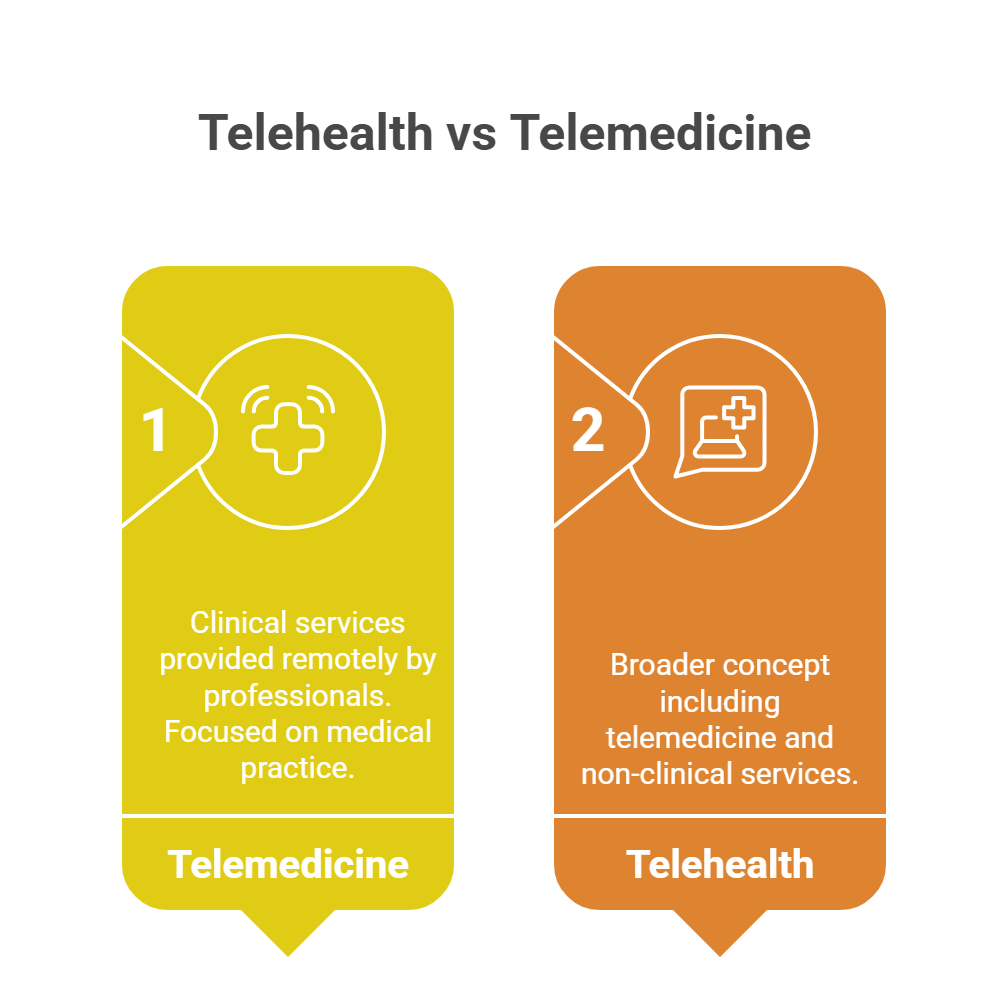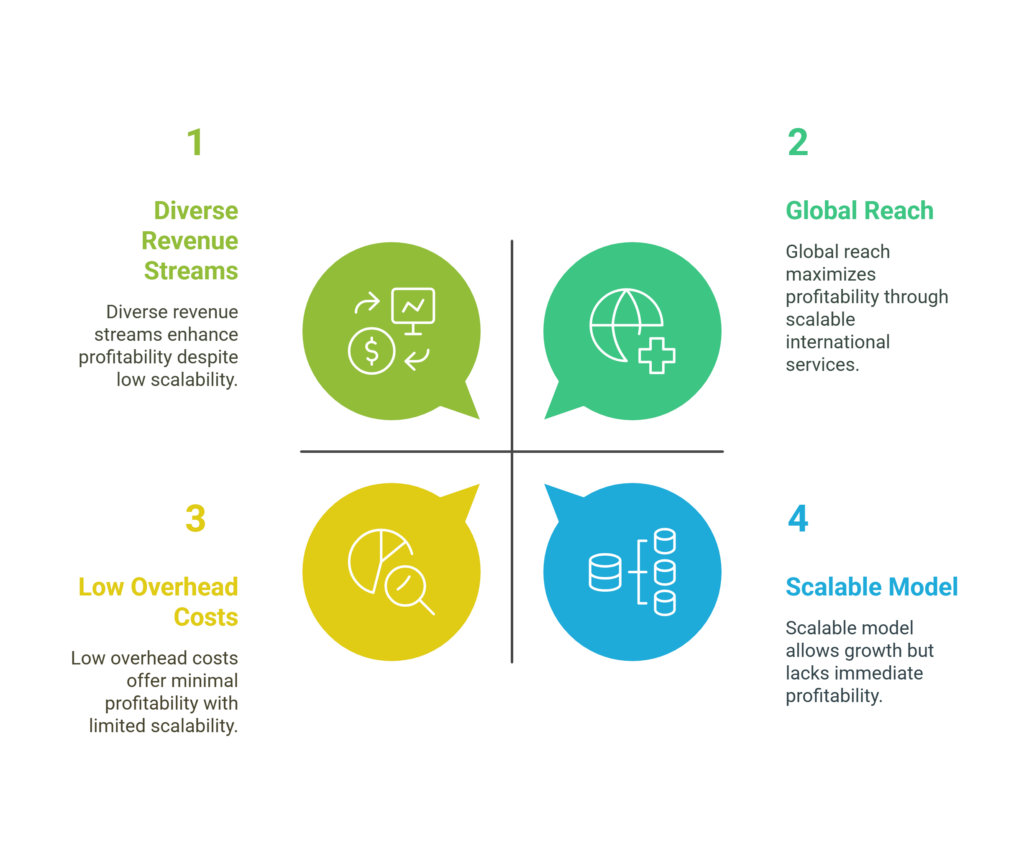So, you’re thinking about launching a telehealth business? Smart move.
Telehealth isn’t just a trend—it’s reshaping how healthcare works. With more people expecting to see doctors from their phones, skip the waiting room, and get care on their own terms, virtual care is quickly becoming the new normal. That shift has opened up a huge opportunity for entrepreneurs, healthcare professionals, and digital health innovators.
But let’s be real: starting a telehealth business isn’t just about hopping on Zoom and calling it a day. There’s a lot that goes into it—tech, regulations, patient experience, licensing, and figuring out how to actually generate revenue. It can feel overwhelming if you don’t know where to start.
The good news? You’re in the right place. In this guide, we’re breaking it all down—step by step—so you can move from idea to launch with clarity and confidence.
How to Start a Telehealth Business: Step-by-Step Guide

Here’s a practical breakdown of what you need to do to launch your telehealth business:
1. Choose a Niche or Specialty
Start by identifying what type of telehealth service you’ll offer. This could be general medical consultations, mental health therapy, dermatology, chronic care management, nutrition coaching, or a mix. Focusing on a specific niche can help you stand out in a competitive market.
2. Research Laws and Licensing
Telehealth is regulated differently depending on your country and even state. In the U.S., for example, healthcare providers must be licensed in the state where the patient is located. You’ll also need to comply with HIPAA (Health Insurance Portability and Accountability Act) for data privacy.
3. Write a Business Plan
Outline your goals, target market, service offerings, revenue model, costs, marketing plan, and compliance strategy. A strong business plan not only guides your launch but also helps if you seek investment or partnerships.
4. Choose the Right Telehealth Platform
You’ll need a secure, user-friendly platform that supports video calls, e-prescriptions, patient records, and scheduling. You can either build your own software or subscribe to an existing solution.
5. Register and Set Up Your Business
Form a legal business entity (e.g., LLC or corporation), obtain necessary business licenses, and get liability insurance. You’ll also need a Tax ID number and a business bank account.
6. Ensure Legal and HIPAA Compliance
Hire legal or compliance consultants to ensure your operations meet local, state, and federal guidelines. You’ll need secure data storage, encrypted communication, and proper consent forms.
7. Hire or Partner with Licensed Providers
Depending on your model, hire healthcare professionals or partner with contractors. Make sure they are credentialed and licensed in the regions you plan to serve.
8. Set Up Payment and Insurance Systems
Integrate payment processing (for direct-to-consumer models) and set up systems to handle insurance claims if you plan to accept them. Credentialing with insurers can take time, so start early.
9. Launch Marketing and Outreach
Build a strong online presence—your website, SEO, and social media are critical. You might also run Google Ads, work with affiliates, or create referral partnerships with other health organizations.
10. Launch and Iterate
Start with a soft launch, collect feedback, and improve your platform and services. Patient satisfaction and smooth user experience are critical to long-term success.
Telehealth vs Telemedicine
Before jumping in, it’s important to understand the distinction between telehealth and telemedicine, as the terms are often used interchangeably, but they’re not quite the same.
Telemedicine refers specifically to clinical services provided remotely by a licensed healthcare professional—such as diagnosing a patient over video or prescribing medications online. It’s narrowly focused on the practice of medicine.
Telehealth, on the other hand, is a broader concept. It includes telemedicine but also encompasses a wide range of non-clinical services such as administrative meetings, remote monitoring, education, and health coaching. For example, mental health counseling, nutritional coaching, and chronic disease monitoring all fall under the telehealth umbrella.

So, if you’re launching a business, it helps to think in terms of telehealth—a more expansive field with diverse service offerings and broader revenue potential.
Is Telehealth Business Profitable?
Short answer: yes. But like any business, profitability depends on execution, planning, and meeting real needs.
The telehealth industry has experienced explosive growth, especially post-2020. According to McKinsey, telehealth usage was 38 times higher in 2021 compared to pre-pandemic levels. Consumers have grown accustomed to virtual care, and healthcare providers are adapting to meet that demand.
Here are a few factors that contribute to profitability:

- Low Overhead Costs: Unlike traditional clinics, telehealth businesses don’t need physical office space, waiting rooms, or a large on-site staff.
- Scalable Model: Once your tech infrastructure is set up, scaling your services is far easier than expanding a brick-and-mortar clinic.
- Global Reach: Depending on licensing and regulatory requirements, you may be able to serve patients across multiple states or even internationally.
- Diverse Revenue Streams: From subscriptions and per-visit charges to partnerships with healthcare systems, there are multiple ways to generate income.
That said, it’s still a healthcare business. Licensing, privacy laws (like HIPAA in the U.S.), and provider credentialing all require thoughtful navigation. But with the right strategy and compliance, telehealth can absolutely be a profitable venture.
How Much Does It Cost to Start a Telehealth Business?
Startup costs for a telehealth business can vary widely depending on the scale, specialty, and infrastructure you envision. A solo practitioner offering therapy sessions from home will have vastly different costs than a multi-specialty platform connecting hundreds of doctors and patients.
Here’s a general breakdown of initial expenses:
- Technology Platform: $10,000–$100,000+
Custom software development can be expensive, but there are also white-label or SaaS platforms that charge monthly fees.
CTA:
Looking to skip the tech headaches and build a secure, scalable telehealth platform that patients actually want to use?
Let Enacton take the wheel.
From HIPAA-compliant infrastructure to user-friendly interfaces and real-time video capabilities, Enacton builds custom telehealth platforms that are tailored to your niche, not just another off-the-shelf solution. Whether you’re a startup or scaling fast, we help you go live faster—without cutting corners.
👉 Get a free consultation with Enacton and bring your telehealth vision to life.
- Legal & Compliance: $5,000–$25,000
Includes setting up the business entity, legal consultations, HIPAA compliance audits, and state-specific regulations. - Licensing and Credentialing: $1,000–$10,000
Costs for ensuring providers are licensed in all states where they intend to practice. - Marketing & Branding: $3,000–$20,000
Branding, website development, SEO, paid ads, and social media campaigns to reach potential clients. - Staffing: Varies
Whether you’re hiring full-time providers, contract workers, or admin staff, your payroll will depend on the size and scope of your services.
In total, a lean telehealth startup could launch with under $50,000, while a more robust or specialized platform might need several hundred thousand in initial investment.
What Are the 4 Types of Telehealth?
Understanding the four main types of telehealth can help you decide what services your business will offer.
1. Live Video Conferencing (Synchronous Telehealth)
This is the most well-known form of telehealth. It allows patients and providers to connect in real time through secure video platforms. It’s commonly used for consultations, follow-ups, and mental health services.
2. Store-and-Forward (Asynchronous Telehealth)
This involves collecting medical data—like images, videos, or test results—and sending them to a provider for evaluation at a later time. It’s especially useful in dermatology, radiology, and pathology.
3. Remote Patient Monitoring (RPM)
RPM involves using digital tools to monitor patient health in real-time. For example, patients with chronic conditions like diabetes or hypertension can use wearable devices that transmit data to their doctors. This model is particularly useful for ongoing care and preventive interventions.
4. Mobile Health (mHealth)
These are health services and information delivered via mobile apps and SMS. Think medication reminders, doctor appointment scheduling, or mental wellness apps. mHealth is a fast-growing segment with massive potential for engagement and scalability.
As a business owner, you can choose one or a combination of these models based on your target market and capabilities.
What is the Most Used Telehealth Platform?
Several telehealth platforms dominate the market, but as of 2025, Teladoc Health continues to be one of the most widely used and recognized.
Teladoc offers a wide range of services—from general medical and mental health to chronic condition management. Its success stems from an early entry into the market, strong partnerships with employers and insurers, and an integrated tech infrastructure.
Other popular platforms include:
- Amwell: Focused on enterprise-level telehealth for hospitals and health systems.
- MDLIVE: Offers services across urgent care, dermatology, and behavioral health.
- Doxy.me: A favorite among small practices and therapists, due to its HIPAA-compliant and easy-to-use platform.
Choosing the right platform for your business depends on your specific needs, budget, and how much customization you want. Some startups build their own proprietary platforms to have more control over features and branding, while others license existing solutions to save on development time and cost.
CTA:
Want to launch your own version of Teladoc, Amwell or MDLIVE?
At Enacton, we specialize in building custom telehealth platform clones—from scratch. That means you get the same powerful features and workflows as industry leaders like Amwell and MDLIVE, but 100% tailored to your brand, your vision, and your business goals.
✅ No bloated code.
✅ No cookie-cutter templates.
✅ Just smart, scalable technology built to perform.
👉 Check Teladoc clone, Amwell Clone and MDLive clone!
How Do Telehealth Companies Make Money?
There are several business models that telehealth companies use to generate revenue. Here are the most common:
1. Fee-for-Service
Patients pay per visit. This model is simple and easy to understand, especially for individual practices or specialty consults.
2. Subscription Plans
Recurring revenue from monthly or annual memberships. Patients pay a flat rate for access to certain services or a set number of consultations per month.
3. Employer or Insurance Contracts
Partnering with companies to provide telehealth services as part of employee benefits. This B2B model can be highly lucrative and offer steady, long-term revenue streams.
4. Software-as-a-Service (SaaS)
Some telehealth companies license their platform to other providers. This tech-first model focuses on offering the infrastructure rather than delivering care.
5. Integrated Care Packages
Offering bundled services such as initial consults, testing kits, and follow-up sessions. Great for specialties like fertility, wellness, or chronic disease care.
6. Marketplace Model
A platform that connects patients with multiple independent providers and takes a commission on each transaction (like Uber, but for healthcare).
Each model has its pros and cons, and you can often combine them. For instance, a company might offer subscription access to basic services and charge additional fees for premium or specialist care.
Final Thoughts
Starting a telehealth business isn’t just about jumping on a trending bandwagon—it’s about reshaping how people access and experience healthcare. It requires more than tech know-how; it needs a deep understanding of compliance, user needs, and sustainable delivery models.
If you’re passionate about healthcare and innovation, the telehealth space offers plenty of opportunities to make a meaningful impact while building a profitable business. Focus on a specific niche, ensure compliance, choose the right tech stack, and stay customer-centric. With thoughtful planning and execution, your telehealth startup can thrive in the digital health revolution.
